432d Wing
| 432d Wing | |
|---|---|
|
Emblem of the 432d Wing | |
| Active | 1943–1959; 1966–1979; 1984–1994; 2007–present |
| Country | United States |
| Branch | United States Air Force |
| Role | UAV Reconnaissance |
| Part of | Air Combat Command |
| Garrison/HQ | Creech Air Force Base, Nevada |
| Motto(s) |
VICTORIA PER SCIENTIAM (Victory through knowledge) If you can't lower Heaven, raise Hell |
| Commanders | |
| Current commander | Col Jim Cluff |
| Notable commanders |
John G. Lorber Michael E. Ryan |
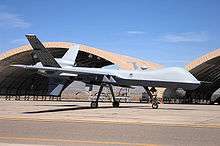
The 432d Wing is a United States Air Force unit assigned to Air Combat Command, stationed at Creech Air Force Base, Nevada. The group operates unmanned reconnaissance aircraft which provide real-time reconnaissance, surveillance, and precision attack against fixed and time-critical targets. The 432d Air Expeditionary Wing is a provisional unit assigned to Air Combat Command and is the designation for components of the 432d Wing when deployed into combat areas as part of the Global War on Terror.[1]
Overview
The 432d Wing is the first United States Air Force wing dedicated to unmanned aircraft systems. The wing stood up 1 May 2007 at Creech Air Force Base, Nevada.[2][3] The wing has dual reporting responsibilities to Ninth Air Force and U.S. Air Forces Central Command (USAFCENT) (as the 432d AEW) at Shaw AFB, South Carolina, as well as to Twelfth Air Force and U.S. Air Forces Southern Command at Davis-Monthan AFB, Arizona.[4]
The 432d is the first wing totally dedicated to operating remotely piloted aircraft: the MQ-1 Predator, MQ-9 Reaper, and RQ-170 Sentinel.[5] The wing has flown aircraft in Operations Enduring and Iraqi Freedom for intelligence surveillance reconnaissance and tactical missions, flown by pilots and sensor operators in the United States.[6]
The 432d is authorized 160 Predator and 60 Reapers. As of May 2007, 6 Reapers and about 85 Predators have been delivered with half of the Predators deployed forward in the United States Central Command area of operations. The wing is expected to fly 12 combat air mission in Iraq and Afghanistan each day.[7]
Units
The wing includes several operational squadrons and a maintenance squadron. There are 440 aircrew members, about half of whom are pilots and the other half sensor operators. There are also 450 maintenance personnel, half of whom are contractors.[7][8]
- 11th Reconnaissance Squadron
- 15th Reconnaissance Squadron
- 18th Reconnaissance Squadron
- 20th Reconnaissance Squadron
- 42d Attack Squadron
- 89th Attack Squadron
- 432d Operations Support Squadron
- 732d Operations Group
- 17th Reconnaissance Squadron
- 22d Reconnaissance Squadron
- 30th Reconnaissance Squadron
- 867th Reconnaissance Squadron
- 432d Maintenance Group
- 432d Aircraft Maintenance Squadron
- 432d Aircraft Communications Maintenance Squadron
- 432d Maintenance Squadron
- 799th Air Base Group
- 799th Air Base Squadron
- 799th Security Forces Squadron
- 99th Ground Combat Training Squadron
History
World War II
The 432d Observation Group was activated on 22 February 1943. It served as the operational training unit (OTU) of the USAAF School of Applied Tactics at Keystone AAF, Florida. The group trained and provided reconnaissance to assist fighter, bombardment, and ground units with their training. Aircraft included Bell P-39 Airacobra fighter and Aeronca L-3 Grasshopper light observation aircraft. The group was disbanded on 1 November 1943.[9]
Tactical Air Command

On 23 March 1953, the 432d Tactical Reconnaissance Group was activated at Shaw AFB, South Carolina. The 432d's mission at Shaw AFB was to assume the reconnaissance training mission that was handled previously by the 363d Tactical Reconnaissance Wing.[11]
The group initially conducted training with two squadrons (20th, 29th) flying the Republic RF-84F "Thunderflash" and two squadrons (41st, 43d) flying the Martin RB-57A "Canberra". In 1957, the group upgraded the 20th and 29th to the McDonnell RF-101C "Voodoo", and the 41st and 43d transitioned to the electronic warfare Douglas EB-66C Destroyer.[9]
When elevated to the 432d Tactical Reconnaissance Wing on 8 February 1958, the wing operated the USAF Advanced Flying Training School, Tactical Reconnaissance. With the elevation to wing status, the 432d TFW was realigned to a four squadron RF-101C wing (17th, 18th, 20th, 29th Tactical Reconnaissance Squadrons).[9][11] From 8 February 1958 to 18 June 1959 the wing was supervised by the 837th Air Division.
In a budgetary move, the 432d TRW was inactivated on 8 April 1959. The RF-101C equipped 17th and 18th TRSs were deployed to NATO, being reassigned to the 66th Tactical Reconnaissance Wing at Laon-Couvron Air Base, France and the 20th and 29th Tactical Reconnaissance Squadrons continued their training missions under the 363d TRW.[9][12]
Vietnam War

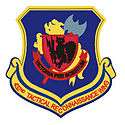

On 18 September 1966, the 432d Tactical Reconnaissance Wing (TRW) was activated at Udorn Royal Thai Air Force Base, Thailand as an McDonnell Douglas RF-4C Phantom II wing. At Udon, it became one of the most diversified units of its size in the Air Force.
The mission of the wing was to provide intelligence information about hostile forces through tactical reconnaissance and use its fighter elements to destroy the targets earmarked by the intelligence data provided. The wing had numerous missions in the support area. The 432d TRW accounted for more than 80 percent of all reconnaissance activity over North Vietnam.
In addition to the reconnaissance mission, the 432d also had a tactical fighter squadron component, with two (13th Tactical Fighter Squadron, 555th Tactical Fighter Squadron) F-4C/D squadrons assigned. The squadrons flew strike missions over North Vietnam and the pilots and weapon systems officers of the 13 TFS and 555 TFS were credited with MiG kills.
In 1968, the 7th Airborne Command and Control Squadron (7th ACCS), flying specialized Lockheed C-130 Hercules aircraft, became part of the 432d. The squadron had been attached to the wing as a temporary duty unit from Da Nang Air Base, South Vietnam. Another unit assigned was the 4th Special Operations Squadron (4th SOS) flying various (AC-47, AC-119) gunships that supported ground units.[9]
On 19 March 1969, the Wing proposed a new forward air control program to 7th Air Force. Calling for photo reconnaissance in conjunction with Fast FACs, it offered the advantage of speedier fresher intelligence from aerial photo interpretation. The mission was approved, and the Wing's volunteers were trained by "Misty" and "Stormy" FACs. The first combined FAC/photo mission was flown on 26 April 1969. The Fast FAC used call sign "Falcon"; the photo recce plane used "Atlanta". The call signs "Laredo" and "Whiplash" were also sometimes used. By July, they were asked to augment the efforts of the "Tiger" FACs in the Barrel Roll of Laos. While supporting Operation About Face, they improvised mass bombings by 16 to 20 fighter-bombers three times in September 1969. One of these mass raids inflicted heavy casualties on a concentration of about 1,000 communist troops. In November, they discovered 102 new targets; the following month, they found 172 more. To do this, they pressed lower than 4,000 feet altitude. In the last quarter of 1969, 21 of their aircraft suffered battle damage. They were then ordered to remain above 4,500 feet altitude to escape ground fire. Regardless of their operating altitude, their bomb damage assessment record was triple the average for 7th Air Force units.[14][15]
In the fall of 1970 the wing was phased down as part of the overall American withdrawal from the Vietnam War; however, in 1972 tactical fighter strength was augmented by deployed Tactical Air Command CONUS-based tactical fighter squadrons being attached to the 432d in response to the North Vietnamese invasion of South Vietnam. In addition, the 421st TFS was reassigned from Takhli RTAFB. During Operation Linebacker, between May and October 1972, the 432d TRW had seven F-4 tactical fighter squadrons assigned or attached, (13th, 56th, 308th, 414th, 421st, 523d and 555th) making it the largest wing in the USAF. The three Vietnam era Airforce Aces all came from the 432d – two from the 555th and one from the 13th. The CONUS-based squadrons returned to the United States in the fall of 1972.
As a result of the Paris Peace Accords of 1973, the numbers of USAF personnel and aircraft at Udorn were reduced. The 421st TFS was inactivated in August and the 555th was reassigned to Luke AFB in 1974. By the spring of 1975, two operational squadrons remained, the 14th TRS (RF-4C) and the 13th TFS (F-4D/E).
Forces from the 432d participated in the SS Mayaguez action in May 1975, sinking two Cambodian Khmer Rouge ships. By 1975, the political climate between Washington and Bangkok had become sour and the Royal Thai Government wanted the USAF out of Thailand by the end of the year. Palace Lightning was the plan under which the USAF would withdraw its aircraft and personnel from Thailand.[16]
The 423nd TFW was inactivated on 23 December 1975. The 13th TFSs F-4E aircraft and some support personnel were reassigned to the 3d TFW at Clark AB, Philippines and the F-4D aircraft and support personnel to the 18th TFW at Kadena Air Base, Okinawa. The 14th TRS was inactivated and the RF-4Cs were sent to Shaw AFB, South Carolina. The last USAF personnel departed Udorn RTAFB on 8 January 1976.[9]
Tactical Drone Group

The 432d was reactivated at Davis-Monthan AFB, Arizona on 1 July 1976 as the 423d Tactical Drone Group. The 432d performed photographic reconnaissance to support tactical air and surface forces with tactical drones. Used AQM-34L/M/V drones, DC-130 launch vehicles, and CH-3 recovery helicopters. The group conducted follow-on testing and evaluation of the AQM-34V model drone and the initial operational testing and evaluation and developmental testing and evaluation of the DC-130H "mother ship." The 432d also supported testing and evaluation of the BQM-34C drone at Hill AFB, Utah.
The group was inactivated in April 1979.[9]
Pacific Air Forces
In July 1984 the 432d was again reactivated as the 432d Tactical Fighter Wing at Misawa AB, Japan. The 432d controlled two F-16 Fighting Falcon squadrons (13th Fighter Squadron, 14th Fighter Squadron) and a rescue squadron (39th RQS) flying the HH-53 "Super Jolly Green Giant" helicopter.
The 432d was replaced by the 35th Fighter Wing on 1 October 1994 at Misawa and again became inactive.[9]
Air Combat Command
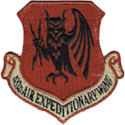
The wing was reactivated at Creech Air Force Base, Nevada, on 1 May 2007 as the Air Force's first unmanned aircraft systems wing. It is currently commanded by Colonel Cluff, USAF.[17] It was renamed the 432d Air Expeditionary Wing in May 2008.[4]
In support of relief for the victims of the 2010 Haiti earthquake, on 27 January 2010 the wing began flying two RQ-1 Predator orbits over Port-au-Prince with six Predators from a training unit flying out of Rafael Hernández Airport, a civilian airport in Puerto Rico, by a detachment of about 50 wing members.[18]
Lineage
- Established as 432d Observation Group on 18 February 1943
- Activated on 22 February 1943
- Redesignated: 432d Reconnaissance Group on 2 April 1943
- Redesignated: 432d Tactical Reconnaissance Group on 11 August 1943
- Disestablished on 1 November 1943
- Reestablished on 14 January 1954
- Activated on 18 March 1954
- Inactivated on 8 February 1958
- Consolidated (31 January 1984) with the 432d Tactical Reconnaissance Wing, which was established on 23 March 1953
- Activated on 8 February 1958
- Inactivated on 18 June 1959
- Activated on 19 August 1966
- Organized on 18 September 1966, assuming personnel/aircraft/equipment of 6234th Tactical Fighter Wing
- Redesignated 432d Tactical Fighter Wing on 15 November 1974
- Inactivated on 23 December 1975
- Redesignated 432d Tactical Drone Group on 24 May 1976
- Activated on 1 July 1976
- Inactivated on 1 April 1979
- Redesignated 432d Tactical Fighter Wing on 5 June 1984
- Activated on 1 July 1984
- Redesignated 432d Fighter Wing on 31 May 1991
- Inactivated on 1 October 1994
- Redesignated 432d Air Expeditionary Group, and converted to a provisional status, on 16 January 2002.
- Returned to permanent status, and redesignated 432d Fighter Wing, on 16 February 2007
- Redesignated 432d Wing, and activated, on 1 May 2007
- Designated as 432d Air Expeditionary Wing in May 2008 and placed in provisional status when components are deployed into combat areas by Air Combat Command.
Assignments
- Air Support Department, Army Air Forces School of Applied Tactics, 22 February – 1 November 1943
- Ninth Air Force, 18 March 1954
- Attached to: 363d Tactical Reconnaissance Wing, 18 March 1954 – 30 October 1955
- Attached to: 6 Air Army [SAGEBRUSH], 31 October – 10 December 1955
- Attached to: 363d Tactical Reconnaissance Wing, 10 December 1955 – 8 February 1958
- 837th Air Division, 8 February 1958 – 18 June 1959
- Pacific Air Forces, 19 August 1966
- Thirteenth Air Force, 18 September 1966
- Attached to: Seventh Air Force, 18 September 1966-c. 15 August 1973
- Attached to:United States Support Activities Group/Seventh Air Force, c. 15 August 1973 – 30 June 1975
- 17th Air Division, 1 July – 23 December 1975
- Twelfth Air Force, 1 July 1976
- Tactical Training, Davis-Monthan, 1 August 1978 – 1 April 1979
- Fifth Air Force, 1 July 1984 – 1 October 1994
- Pacific Air Forces to activate or inactivate at any time after 16 January 2002
- Twelfth Air Force, 1 May 2007 – present
- Air Combat Command to activate or inactivate at any time after 1 June 2008 (432d AEW)
Components
- Group
- 432d Operations Group: 31 May 1991 – 1 October 1994. 1 May 2007 – present
- 732d Operations Group:
- 4411th Combat Crew Training Group: attached 8 April – 17 May 1959
- Squadron
- 3d Observation (later, 3d Tactical Reconnaissance) Squadron: attached 27 March – 1 November 1943
- 4th Tactical Fighter Squadron: attached 29–30 October 1972, assigned 31 October 1972 – 23 December 1975 (not operational, 7–23 December 1975)
- 7th Airborne Command and Control Squadron: 31 October 1968 – 30 April 1972 (detached entire period)
- 11th Tactical Reconnaissance, Photographic-Jet (later, 11th Tactical Reconnaissance; 11th Tactical Drone) Squadron: 25 October 1966 – 10 November 1970; 1 July 1976 – 1 April 1979
- 13th Tactical Fighter Squadron: attached 21 October – 14 November 1967; assigned 15 November 1967 – 30 June 1975; 1 June 1985 – 31 May 1991
- 14th Tactical Reconnaissance (later, 14th Tactical Fighter) Squadron: attached 28 October – 5 November 1967, assigned 6 November 1967 – 30 June 1975; 1 January 1987 – 31 May 1991
- 17th Tactical Reconnaissance Squadron, Photographic-Jet: attached 8 January – 7 February 1958, assigned 8 February 1958 – 10 May 1959 (detached 6 September – 9 December 1958)
- 18th Tactical Reconnaissance Squadron, Photographic-Jet: attached 8 January – 7 February 1958, assigned 8 February 1958 – 1 June 1959.
- 20th Tactical Reconnaissance Squadron, Photographic-Jet (later, 20th Tactical Reconnaissance): 18 March 1954 – 18 May 1959 (detached 8 April – 17 May 1959); 18 September 1966 – 1 November 1967
- 22d Tactical Drone Squadron: 1 July 1976 – 1 April 1979
- 25th Tactical Fighter Squadron: 5 July 1974 – 18 December 1975
- 29th Tactical Reconnaissance Squadron, Photographic-Jet: 18 March 1954 – 18 May 1959 (detached 8 April – 17 May 1959)
- 41st Tactical Reconnaissance Squadron, Night Photographic (later, 41st Tactical Reconnaissance, Photographic-Jet; 41st Tactical Reconnaissance; 41st Tactical Electronic Warfare) Squadron: 18 March 1954 – 8 February 1958 (detached 20 October-c. 6 December 1955 and 8 January – 8 February 1958); 18 September 1966 – 15 August 1967 (detached 8–15 August 1967)
- 43d Tactical Reconnaissance, Night Photographic (later, 43d Tactical Reconnaissance, Night Photographic-Jet) Squadron: 18 March 1954 – 8 February 1958 (detached 8 January – 8 February 1958); attached c. 1 February – 7 April 1959
- 58th Tactical Fighter Squadron: attached 9 May – 14 October 1972
- 307th Tactical Fighter Squadron: attached c. 29 July – 28 October 1972
- 308th Tactical Fighter Squadron: attached c. 9 May-c. 29 July 1972
- 421st Tactical Fighter Squadron: 31 October 1972 – 23 December 1975 (detached 14–23 December 1975)
- 523d Tactical Fighter Squadron: attached 9 April – 25 October 1972
- 555th Tactical Fighter Squadron: attached 28–31 May 1968; assigned 1 June 1968 – 5 July 1974
- 6460th Tactical Reconnaissance (later, 6460th Tactical Electronic Warfare) Squadron; 18 September 1966 – 15 August 1967 (detached 8–15 August 1967)
- 6461st Tactical Reconnaissance Squadron, Photographic-Jet: 18 September – 8 November 1966 (not operational, 25 October-8 Nov 1966)
Stations
- Alachua Army Airfield, Florida, 22 February 1943
- Keystone Army Airfield, Florida, March-1 November 1943
- Shaw AFB, South Carolina, 18 March 1954 – 18 June 1959
- Udorn RTAFB, Thailand, 18 September 1966 – 23 December 1975
- Davis-Monthan AFB, Arizona, 1 July 1976 – 1 April 1979
- Misawa AB, Japan, 1 July 1984 – 1 October 1994
- Creech AFB, Nevada, 1 May 2007 – present
Aircraft
|
|
References
- ↑ "432d becomes Air Expeditionary Wing" By Capt. Ed Ekpoudom, 432d Wing Public Affairs. 9 May 2008
- ↑ Whitney, Ryan (3 May 2007). "Air Force stands up first unmanned aircraft systems wing". Air Force Link. Archived from the original on 8 May 2007.
- ↑ Rodgers, Keith. "Reactivation creates wing for remotely controlled planes". Las Vegas Review-Journal. p. 4B.
- 1 2 432d becomes Air Expeditionary Wing
- ↑ Dual role wing gets new commander: 432 WG/AEW change of command
- ↑ "First MQ-9 Reaper makes its home on Nevada flightline". Air Force Link. Archived from the original on 10 May 2007. Retrieved 2 May 2007.
- 1 2 Lisa Burgess (3 May 2007). "Reactivated wing is first combat unit with UAVs". Stars and Stripes.
- ↑ "Creech AFB Factsheet". Nellis Air Force Base. Archived from the original on 1 July 2013.
- 1 2 3 4 5 6 7 8 AFHRA 432d Wing history page
- 1 2 "USAAS-USAAC-USAAF-USAF Aircraft Serial Numbers—1908 to present". Archived from the original on 7 February 2004.
- 1 2 "Shaw AFB Factsheet". GlobalSecurity.org.
- ↑ McAuliffe, Jerome J. (2005). US Air Force in France 1950–1967. San Diego, California: Milspec Press. pp. Chapter 13, Laon–Couvron Air Base. ISBN 0-9770371-1-8.
- ↑ Martin, Patrick (1994). Tail Code: The Complete History of USAF Tactical Aircraft Tail Code Markings. Schiffer Military Aviation History. ISBN 0-88740-513-4.
- ↑ Rowley, Ralph A. (1975). The Air Force in Southeast Asia: FAC Operations 1965–1970. U.S. Office of Air Force History. Military Bookshop (2011 reprint). ISBNs 1780396562, 978-1780396569. Pages 193–194.
- ↑ Schlight, John (1969). Project CHECO Report: "JET FORWARD AIR CONTROLLERS IN SEASIA." Headquarters Pacific Air Force. ASIN B00ARRLMEY. Pages 30–33.
- ↑ Glasser, Jeffrey D. (1998). The Secret Vietnam War: The United States Air Force in Thailand, 1961–1975. McFarland & Company. ISBN 0-7864-0084-6.
- ↑ http://www.creech.af.mil/library/biographies/bio.asp?id=12391
- ↑ Predators send video feeds to help in Haiti, Air Force Times
- Maurer, Maurer (1983). Air Force Combat Units Of World War II. Maxwell AFB, Alabama: Office of Air Force History. ISBN 0-89201-092-4.
- "Robot air attack squadron bound for Iraq; 'Reaper' packs bombs, missiles". International Herald Tribune. Associated Press. 14 July 2007. Retrieved 7 November 2008.
External links
![]() This article incorporates public domain material from the Air Force Historical Research Agency website http://www.afhra.af.mil/.
This article incorporates public domain material from the Air Force Historical Research Agency website http://www.afhra.af.mil/.
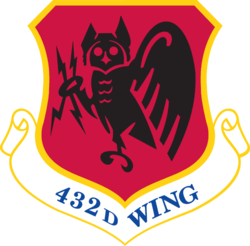



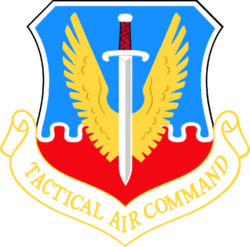
.svg.png)